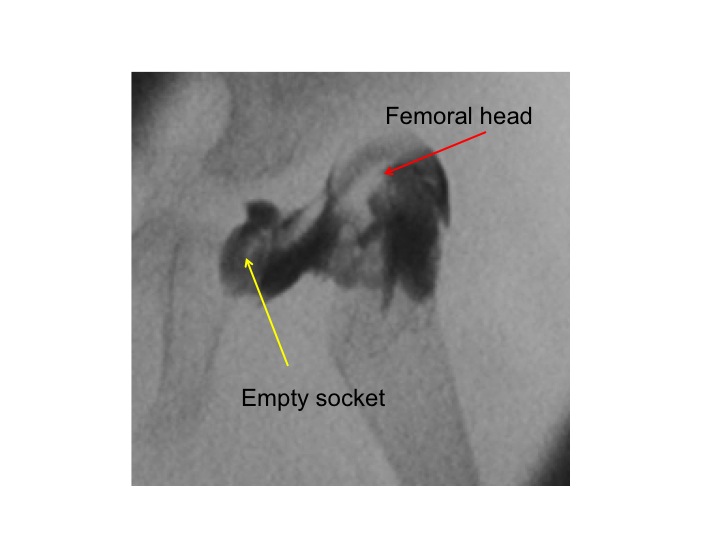
Treatment: Age 6-18 Months

After 6 months babies are too large to be treated in a pavlik harness. It is possible to manipulate some hips (mostly those less than 1 yr) back into the joint. This is done under a general anaesthetic. A satisfactory result is verified by injecting dye into the joint (arthrogram) which outlines the structures very accurately. If the hip sits in the socket (reduced) this position has to be maintained for 3-4 months. This is achieved using a plaster called a hip spica. This is applied from the feet to the nipple line. The baby is essentially immobile during this period and the cast has to be changed every 6 weeks.
Information on hip spica care and adaptive devices can be found at the steps website.
As time goes by relocating the hip becomes progressively more difficult. This is because the tissues around the hip become tighter. The tendons are short and the lining of the joint (capsule) becomes constricted. If closed (non operative) reduction is not possible surgery is indicated once babies are more than 6 months old. In this group Mr Bache favours an operation performed through a small (3-4cm) incision in the groin. This is called a medial approach open reduction (MAOR). The tight tendons and capsule are released and the femoral head is relocated in the socket. The baby will still need to be placed in a hip spica for 8-10 weeks until the hip stabilises in this position. The wound is closed with dissolvable sutures. The scar heals very well and in many cases is almost impossible to identify after 2-3 years.
There is a small risk of the hip redislocating and for this reason a CT or MRI scan is performed in the first few days to confirm that the hip is still in place. The incidence of redislocation in most studies is quoted at 3-4%. In nearly 100 cases Mr Bache has had only one hip redislocate.
It is important that all babies who have surgery for DDH are reviewed intermittently (usually yearly) since with continued growth a small number a patients will develop a shallow socket despite the hip being relocated.
